The New Enlightenment in the Decade of the Brain Will Not Be Centralized
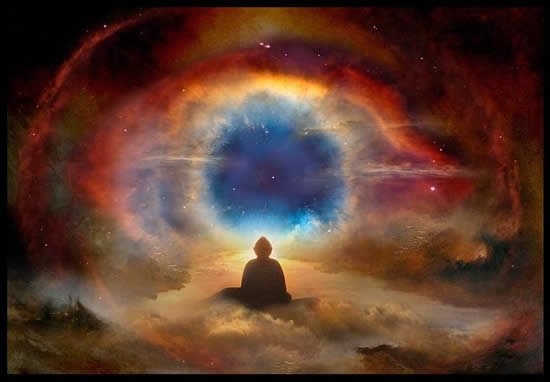
Many of us have questioned our belief in God (and Government), but how many of us have questioned our belief in our Self? After all, when we say, “I” believe, or “I” don’t believe, what are we really referring to? Most of us operate with a view of our self as a centralized entity existing somewhere within our brain.
When we aim to restructure society however it can help us think of new ways to restructure ourselves. The flaw we see in society with its centralized organizations and control is to a large extent reflected in our very selves. Questioning the former, we should also question the latter.
Centralized and Decentralized Organizations
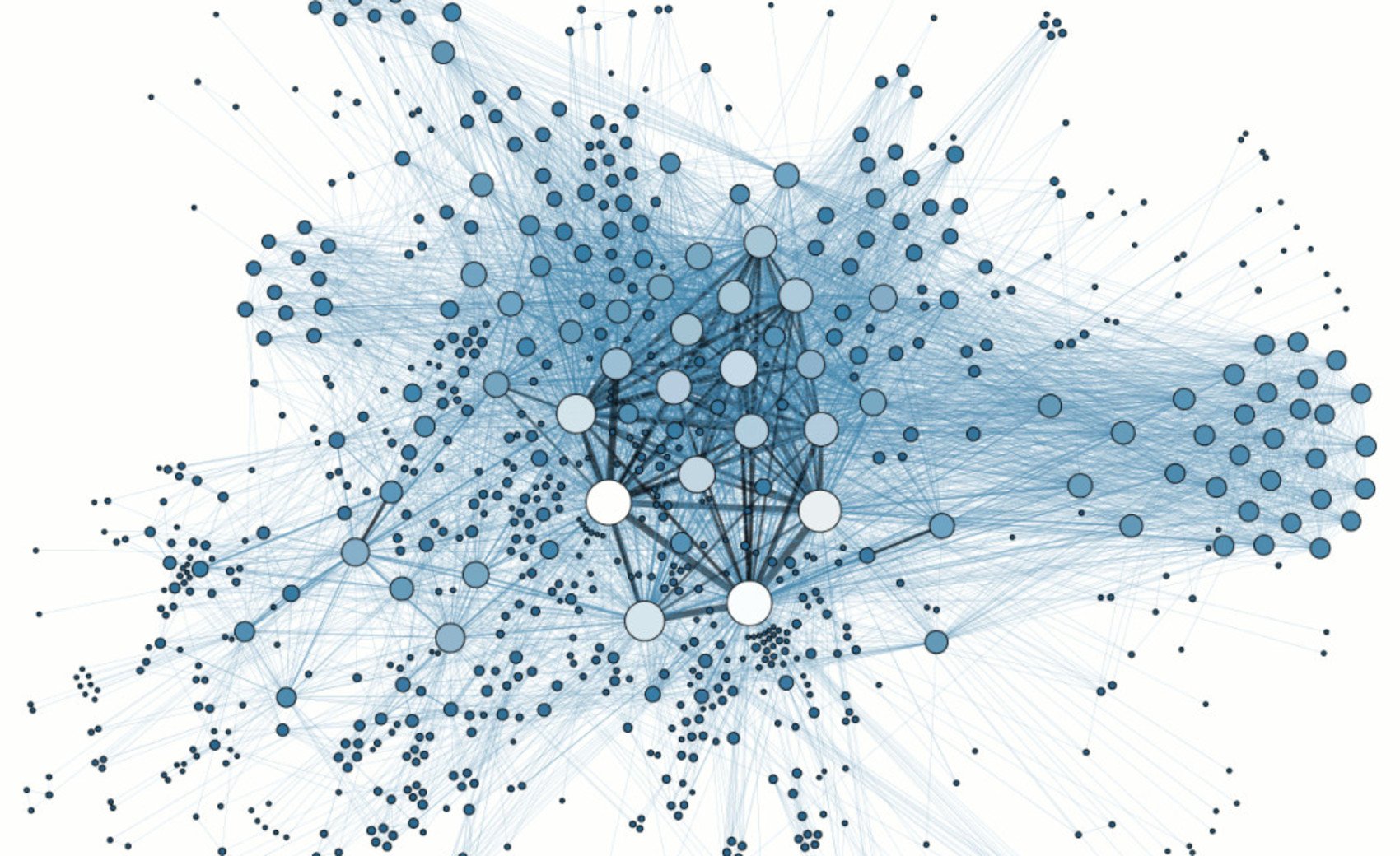
We live in a time of big, centralized organizations like states, corporations, banks, and religions that exert control over all people everywhere.
Decentralized Autonomous Organizations, like Bitcoin, BitShares, and Ethereum, have the potential to decentralize our money, our means of exchange and even computational work.
This will make it more difficult for middlemen to take a cut of our common essential infrastructure, it will make organizations less monopolistic and more open to all.
The intuition is that one part imposing its will on another part is immoral; that the violence inherent in blame and punishment only leads to more violence, and that centralized organizational complexity leads to less rather than more effective decision-making.
The Agent of The Brain?
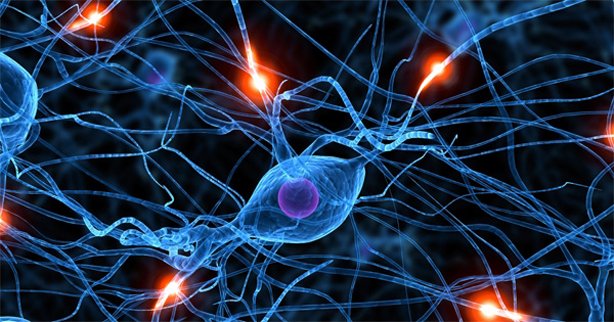
The brain with its billions of interconnected neurons may at first glance look like a decentralized computer. From our own experience, however, we have a “self” that is in charge of things, that takes credit or blame for what happens.
But is there really some place in the brain that deserves credit or blame for what happens? Is there a single, free willed entity in charge of our brain?
Our sense of self is strong and it seems difficult to deny that it is “I” who is controlling my actions, and “I” who deserves praise or punishment. But this sense that we are in charge is in many ways an illusion.
Studies have shown that one part of the brain takes ownership over what happens elsewhere in the brain, claims it as its own and judges it praiseworthy or blameworthy. For more on the self and free will, check out this scientific experiment on the self and free will.
Like many spiritual teachers would say, the self is an illusion. And yet, when we go to neuroscience, we find that there are correlates to this sense of self. So what’s going on? Are they simply wrong? In fact, we might even say that there is a selfing-network in the brain.
The Default Mode Network: The Selfing Network of the Brain
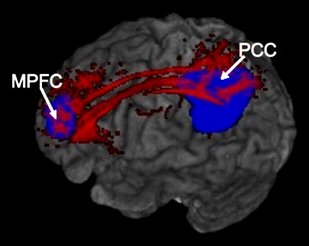
This network is called the Default Mode Network (DMN). DMN is what your brain "defaults" to when you aren't doing any specific "task.” A scientific paper published in Neuron in 2010 found 11 different "selfing" centers that make up most DMN activity. These 11 centers are in turn divided into two "core" centers, and two "subnetworks" which the core communicates heavily with. The two core nodes of the DMN network is illustrated above in relation to the brain.
You can also see these two core centers in yellow in the picture below, with their two subnetworks in green and blue below. The blue subnetwork is involved in "self and other", i.e you and your chair, you and your computer, you and your partner, etc. The green subnetwork is responsible for "you in time", i.e. you in the future, you in the past, etc.
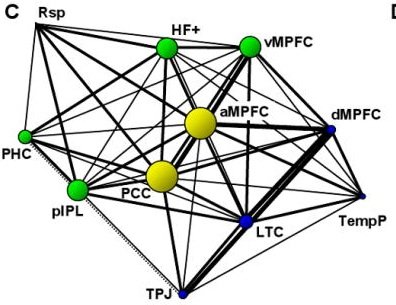
It is easy to think that the brain does nothing when subjectively we are just “resting.” In fact most of the neuronal activity that is happening, which consumes around 20% of our total energy consumption, is happening whether we are trying to do a task or not.
Given that this selfing network is centralizing brain function, likely making it more constrained and inefficient than it needs to be - while consuming unreasonable amounts of energy resources - how can we decrease DMN resting state activity? We know at least three ways to do this effectively, outlined below.
Decreasing DMN Resting Activity 1: Meditation

Meditation practice lessens the hold DMN has on our resting state energy consumption. The DMN has been likened to to an energy-draining black hole, that consumes energy without producing much of value (a bureaucracy?). How then, can we cut down on our resting state DMN activity? Meditation does this by undermining the DMN network with inquiry into the real nature of the self, in space and in time.
The DMN’s two core centers are the PCC and mPFC—together with the subnetworks outlined above, the PCC and mPFC create the dual “self in space” and “self in time” narratives. The blue subnetwork (see above) involved in self and other can be undermined if we manage to see through the loops of thought that create a sense of self, and a division between self and others. The green network involved in self and time can be undermined in a similar way, by seeing through the loops of thought that create a sense of self and a self in a narrative in time.
Decreasing DMN Resting Activity 2: Psychedelics
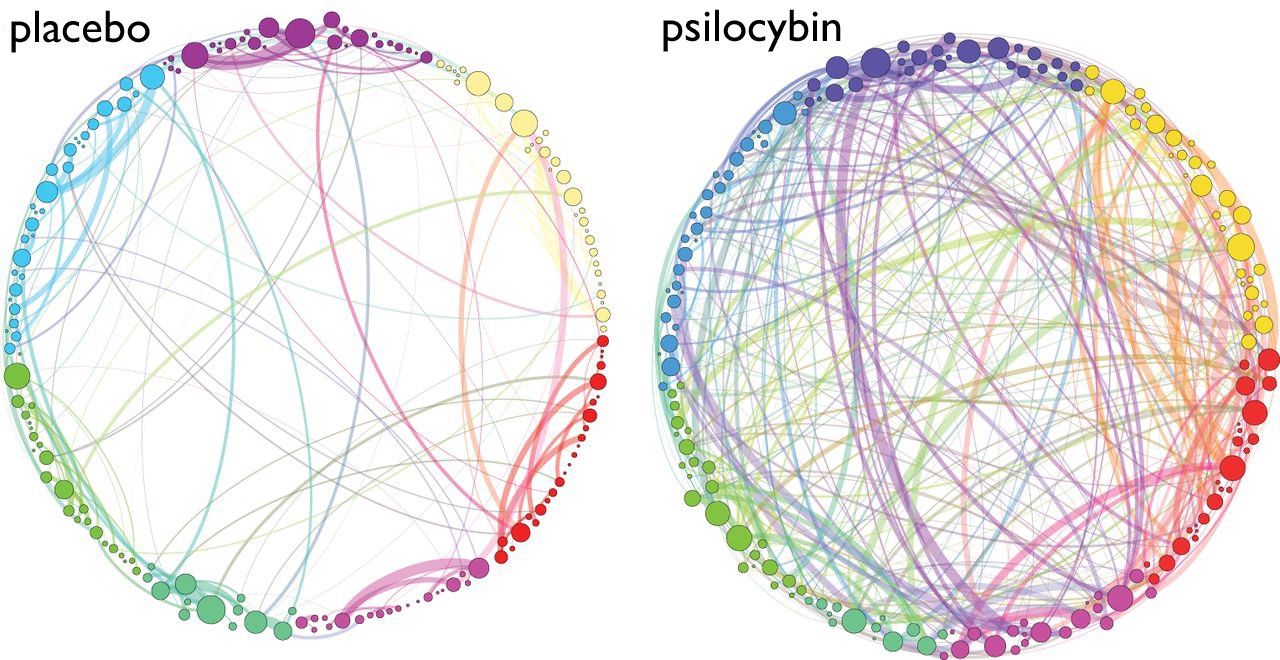
Psychedelics in many ways work just like meditation and spiritual practise, to undermine the core networks in DMN that centralize brain function and constrain our view of the world.
“Psychedelics are thought of as ‘mind-expanding’ drugs so it has commonly been assumed that they work by increasing brain activity, but surprisingly, we found that psilocybin actually caused activity to decrease in areas that have the densest connections with other areas. These hubs constrain our experience of the world and keep it orderly. We now know that deactivating these regions leads to a state in which the world is experienced as strange.” Professor David Nutt
Just like meditation and spiritual practice, psychedelics cuts so deep into the human experience because it cuts right into the heart of our sense of self.
…psilocybin mushrooms apparently work by decreasing activity in key areas of the brain, rather than increasing it. Blood flow decreases to the medial prefrontal cortex (mPFC) and posterior cingulate cortex (PCC). Overactivity in the mPFC is associated with depression, one reason why psilocybin can sometimes be associated with antidepressant effects; the function of the PCC isn’t fully known, but is often associated with consciousness and identity. - Source
Anyone who has taken psychedelics will know that it can be a profoundly transformative experience, matched in intensity only by certain stroke or deeply psychotic patients may reports, and of course deeply religious/spiritual experiences, a self without distinction to others, and a sense of time that feels eternal. Check out my post on a DMT documentary here.
What is often not considered is that so-called enlightened figures, who are in a state that science is just beginning to research under the name of Persistent Non-Symbolic Consciousness, score the same under normal circumstances on the Hood Mysticism Scale as normal people score on that test under the influence of psychedelics.
Decreasing DMN Resting Activity 3: Flow
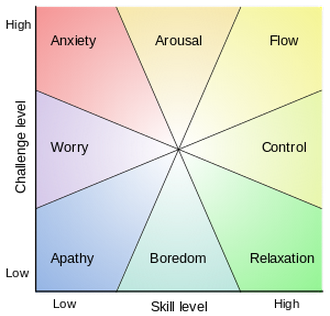
Finally, in recent times one of the least spiritual-sounding ways to decrease DMN resting activity is to achieve a state of flow. This is something most people are comfortable with, as we’ve all had those experiences under certain circumstances of doing sports, being in love or being in the zone, where our sense of self falls away, our sense of time falls away, and we’re still being very alive, intelligent and focused on what we are doing and experiencing.
I wrote a post on flow states here that you can check out. It outlines the 17 triggers we can use to achieve a flow state. For the purposes of this post, it is most noteworthy that the science of flow is cutting to the heart of human optimal performance, while also touching the ability to at least temporarily decrease activity in our DMN “selfing” network.
Is Enlightenment Possible?
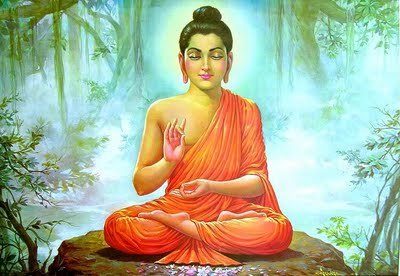
“What’s fascinating to me, is I can still reason and problem solve, I just don’t have this ongoing emotionally-charged self-referential narrative gobbling up bandwidth.” - Gary Weber
The study of people with persistent non-symbolic consciousness seems to indicate that it is possible to function in a stable state of consciousness that is completely different from normal waking consciousness.
There is no clear evidence that this state is “better” than a normal state of consciousness. People who have achieved the state report that it is much better than normal states of consciousness however, that it is “blissful” compared to normal “suffering” ego-consciousness.
Moreover, extreme sport athletes report having their peak performance moments occur in such states, and scientists given psychedelics in a study reported solving problems they had been struggling with for a long time, leading to objectively verifiable results in respected journals.
There is also reports that entrepreneurs in Silicon Valley are starting to micro-dose on LSD for its ability to increase energy-levels and creative intelligence.
Letting Go of Control
Contemporary spiritual teacher Adyashanti reports from his own experience that letting go of control is the deepest obstacle to true spiritual realization. This jives with the research on persistent non-symbolic consciousness, where the last stage of enlightenment is total surrender of control, letting go of the illusion that Rodolfo discovered by his experiment.
Rodolfo concludes, like many other scientists, that we have to believe in our sense of self and our free will, even though they consider that they have refuted it. This seems to me a pessimistic view of our situation, that we have to settle for anything less than the truth. Apparently, some follow truth to the very end, risking everything, but reporting that they gained everything.
Can We Let Go?
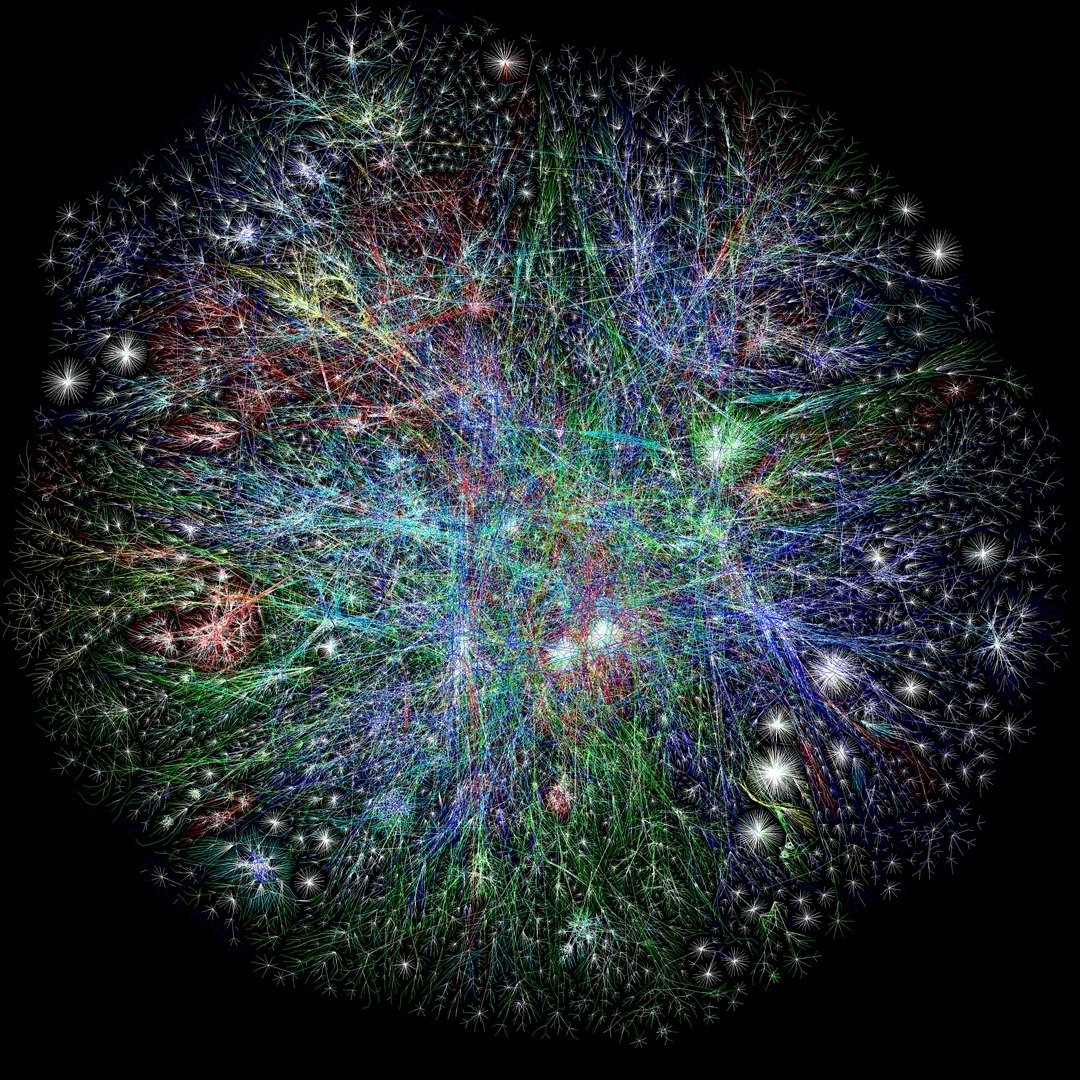
Paradoxically, as soon as we try to move in the direction of not doing anything, not being anything, we are actively being someone, doing something. In many ways, the problem is like the problem of politics: If the best political solution is non-political, then we can’t say anything to achieve it. As soon as we advocate for society to be a certain way, we are imposing our own idea on the whole of society. If the very idea is that everyone should be free on their own terms, there is very little we can do except negate all attempts at forcing some rule on all.
Thus, the same problem of trying to control all aspects of reality, forcing them to comply to a certain limited rule, occurs on the scale of each individual, trying to control their own reality, by using a limited view of self, to impose certain rules on their total conscious expression. In both cases, the same problematic and inefficient complexity ensues, as it dawns on the limited part that it really cannot control the whole in a more efficient way than the parts can govern themselves in their own freedom.
I hope you enjoyed this essay!
Steemit is giving the me opportunity to focus on researching the areas of interest that I find most fascinating. I am really appreciative and hope some of you find value in these thoughts and links. Leave a comment below with whatever comes to mind, or whatever you want me to write about next!

